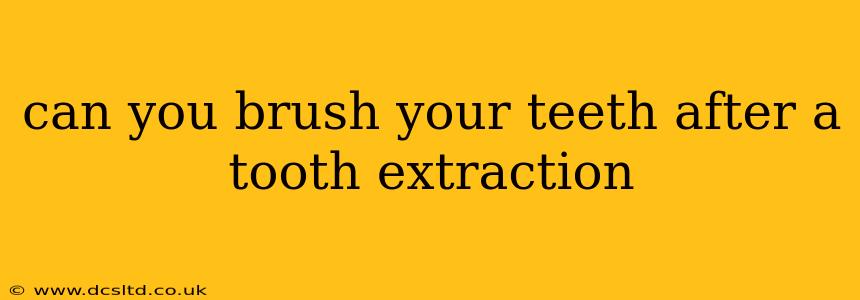Can You Brush Your Teeth After a Tooth Extraction?
The short answer is: yes, but with caution. Brushing your teeth after a tooth extraction is important for maintaining good oral hygiene, but you need to do it gently and carefully to avoid disturbing the extraction site. The way you brush, and when you begin brushing again, is crucial for proper healing.
When Can I Start Brushing After Tooth Extraction?
You should wait at least 24 hours after your tooth extraction before brushing near the extraction site. This allows the blood clot to form, which is essential for healing and preventing dry socket (a painful condition). Your dentist or oral surgeon will provide specific instructions based on your individual situation, so always follow their advice.
How Should I Brush After a Tooth Extraction?
Once you're cleared to brush, here's how to do it safely:
- Gentle Brushing: Use a soft-bristled toothbrush and brush gently around the extraction site. Avoid direct contact with the area as much as possible for the first few days.
- Focus on Other Areas: Concentrate your brushing efforts on the other teeth, ensuring you thoroughly clean them.
- Rinse Gently: Use a saltwater rinse (1/2 teaspoon of salt dissolved in 8 ounces of warm water) several times a day to help keep the area clean and promote healing. Avoid vigorous rinsing or spitting, as this can dislodge the blood clot.
- Avoid the Extraction Site (Initially): For the first few days, it's best to gently brush around the extraction site, avoiding direct contact. As healing progresses, you can gradually resume normal brushing techniques.
What if I Have Pain or Bleeding After Brushing?
If you experience pain or significant bleeding after brushing, immediately contact your dentist or oral surgeon. This could indicate a problem with the healing process.
What are the Risks of Not Brushing After Tooth Extraction?
Not brushing your teeth after an extraction, even if it's just the area surrounding the extraction site, can increase your risk of infection. Food particles and bacteria can accumulate, leading to complications.
What Type of Toothbrush Should I Use After a Tooth Extraction?
A soft-bristled toothbrush is highly recommended after a tooth extraction to prevent irritation and damage to the healing tissues. Avoid using hard-bristled brushes, electric toothbrushes with high-intensity vibrations, or any brushing techniques that are too aggressive.
Can I Use Mouthwash After Tooth Extraction?
Many dentists recommend using a mild, alcohol-free mouthwash after a tooth extraction, but you should only do this after consulting with your dentist. Alcohol-based mouthwashes can irritate the extraction site, and some mouthwashes contain ingredients that could hinder healing. Saltwater rinses are generally preferred for their antiseptic properties and lack of potential irritants.
How Long Does It Take to Fully Heal After Tooth Extraction?
Healing times vary depending on factors such as the complexity of the extraction, individual healing abilities, and post-operative care. However, most people experience significant healing within a few weeks, with complete healing taking several months. Regular brushing and good oral hygiene are essential throughout this entire period.
Remember, these are general guidelines. Always follow your dentist's specific instructions regarding post-extraction care. They can provide tailored advice based on your individual needs and the specifics of your procedure. Proper aftercare is crucial for a comfortable and successful recovery.
